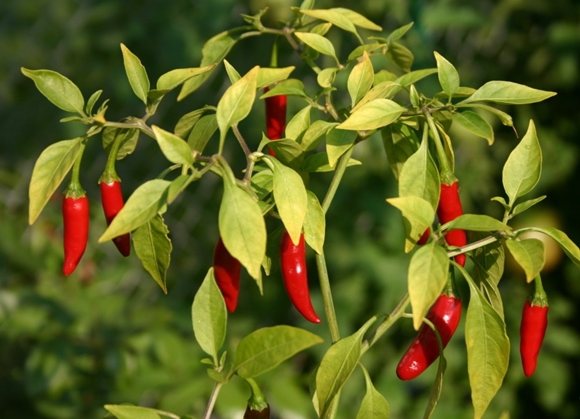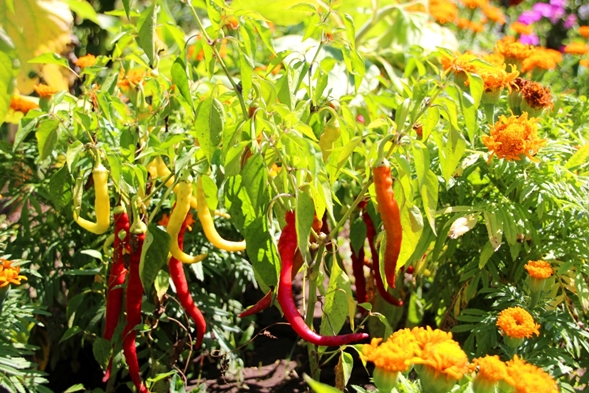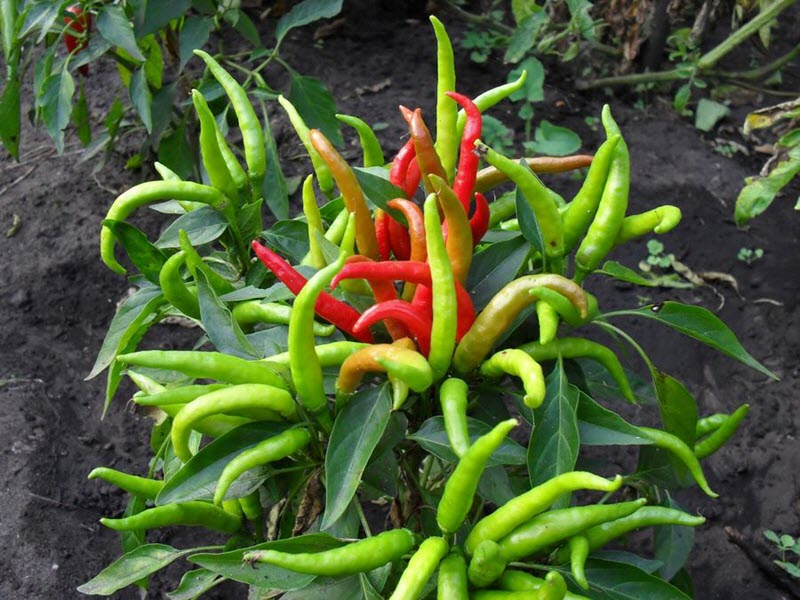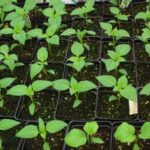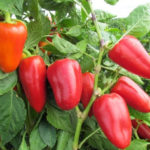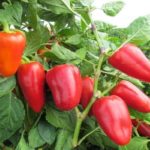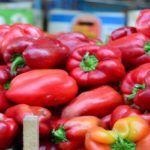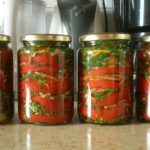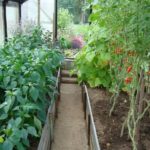Not every gardener knows which vegetable crops have a beneficial effect on the growth and taste of peppers, whether it is possible to plant sweet and bitter peppers next to each other, which they cannot tolerate at all, and why they grow poorly. It is necessary to know this, because sometimes it is those plants that are nearby that affect the yield. Some help growth and development, others destroy, transmit pests and take away vitamins. Sometimes it is necessary to plant some crops at a very large distance from each other.
They dream of growing hot peppers Many gardeners, but they doubt the right choice of place for it. There are several nuances that help you determine exactly where hot peppers can be planted next to so that they do not harm other crops. Everything that we plant and grow in our dachas should yield good yields.
Growing hot peppers
In the northern regions, peppers are usually grown from seeds, and then the seedlings are planted in loosened soil. They are planted in open ground mainly only in warm regions. Pepper loves well-dug soil, fertilizers and high-quality watering. In order for it to grow well and quickly bear fruit, it is pruned, the tops are cut off, and it is fed with organic minerals. In open ground, ripening occurs more slowly and care will be more thorough. Chile prefers warmth.
Basic care is the same as for all heat-loving plants. It is necessary to weed, spray, water well twice a week, and also feed with the necessary fertilizers.
Hot peppers can reproduce by seeds and shoots. Small shoots are cut off, placed in water, and then after some time they grow roots. Many people grow this crop on their windowsill at home. The seeds can be dried and germinated for next year.
Hot peppers are harvested in mid-summer or autumn. There is no need to wait until it is overripe, but pick the fruits while they are still green. It is perfectly stored in winter, seasonings are made from it, and added to snacks and pickles. Its benefits are to increase immunity and improve metabolism. It contains a lot of vitamin C, A, B, and iron. They say about it that it contains hormones of joy.
Favorable neighbors for this variety
It is very important for lovers of hot peppers to know which plants have a beneficial effect on its development, which proximity will improve the growth and nutrition of the fruit, and not take away all the juices. Few people have detailed information about what this hot vegetable can be planted next to.
It is best to plant hot pepper with those seedlings that have a beneficial effect on it. Peppers planted together with their enemies become sick, do not bear fruit, are covered with pests, and wither.
Good neighbors next to hot pepper are various herbs. There should not be too much of it; thickets of grass can pull nutrients from the root system of nightshades. And weeds are harmful because they transmit diseases and bad insects. You can plant a little on the edge or in the middle between the bushes. It could be chamomile, mint, coltsfoot, nettle, spinach, lettuce. They greatly influence the speedy appearance of fruits.
Herbs such as basil, dill, thyme, and cilantro also grow very well nearby. They affect the additional taste properties of hot pepper. The most important thing is to make sure that there is not a lot of shade, since the vegetable does not like it. There should be many times more hot vegetables than other greens.
It is very useful to plant tomatoes nearby. They seem to help each other grow faster. And if you plant a little garlic between them, it will drive away all harmful insects.
In one greenhouse you can plant peppers next to eggplants. They are similar in terms of ripening, planting and care. And they don’t interfere with each other’s development.
It will go well with carrots, onions, and cabbage. They can be planted in nearby beds. Then you will be able to grow delicious, healthy vegetables.
What is prohibited from planting?
There are some plants that are completely incompatible with red pepper. The negative impact is felt even if the neighbor is in the garden nearby. Sometimes peppers also harm the taste of other vegetables that were planted with them.
There is no need to plant fennel with this seasoning. This will cause diseases of the former, the foliage will wither, and the fruits will not be able to develop normally, since fennel takes everything for its development.
Beets are also not a very good friend. It grows very rapidly, reaches for the sun, and suppresses most of the roots with its strength. Therefore, it is important to know at what distance it is better to seat them.
Pepper is not friendly with potatoes. For tubers, it is better to find a place away from everyone else in the country. It takes away all the minerals and vitamins from other crops, since it always needs a lot of them for development and growth.
Hot and sweet peppers should not grow in the same bed. If they are nearby, they will begin to pollinate each other, and subsequently there will be a lot of bitterness in the bell peppers, and a completely different taste will be transmitted from the sweet. Their flowers transmit pollination to each other, resulting in new species. That is, the pepper will no longer provide the necessary seasoning.
Next to sweet peppers, spicy peppers will lose all their beneficial properties; they will become a completely different variety, not the same as before. Therefore, it is better to plant the sweet vegetable in another greenhouse along with cucumbers and tomatoes. By separating hot and bell peppers, the harvest and taste properties will be of higher quality.
After what plants are planted?
There is an important rule: you need to make sure not to plant the same varieties year after year, and also keep track of which plants can be sown after a given variety.Indeed, often the reason for a low harvest is that its enemy was previously planted in the place of the pepper.
It is very important to plant seedlings on rested soil, this means that the varieties that were grown before were those that would not harm the vegetable. Plants need to be swapped. For example, melons. Melons, watermelons, zucchini, eggplants, pumpkins are plants after which chili will produce even, tasty fruits.
The same theme applies to cucumbers. After them, the land is most favorable for growth. If there are several greenhouses at your dacha, then it is worth changing the plantings in them from year to year.
And the soil after beans, peas and beans is saturated with potassium and phosphorus minerals, which is very useful for spicy peppers. It grows better from compost, humus, potassium, phosphorus and magnesium. You should know which plants produce fortified soil.
If herbs grew on the ridge last year, the soil will be rested and the fruits will have a bright taste. Herbs also provide necessary minerals to humus soil, which is very important for nightshades.
You cannot plant peppers after tomatoes, eggplants, beets, potatoes, or bell peppers. These plants are of the same nightshade family, the same species has a detrimental effect on seedlings. They suffer from the same diseases, are attacked by the same insects, and take on beneficial substances from each other.
It is important to remember which plants can be planted next to hot peppers and which cannot be planted. The compatibility of vegetable crops greatly influences their growth. Sometimes it happens that he himself prevents other varieties from developing correctly. If you correctly draw up a plan for planting in your garden and ensure a favorable proximity of vegetables, then you will never make mistakes, and as a result you will get an excellent harvest.

